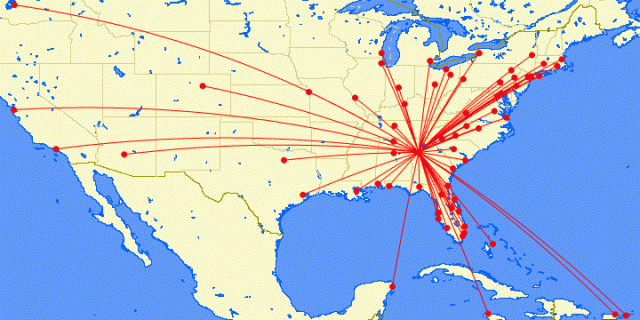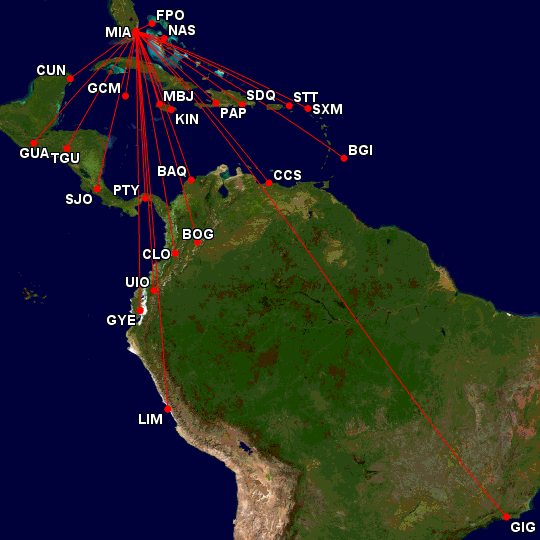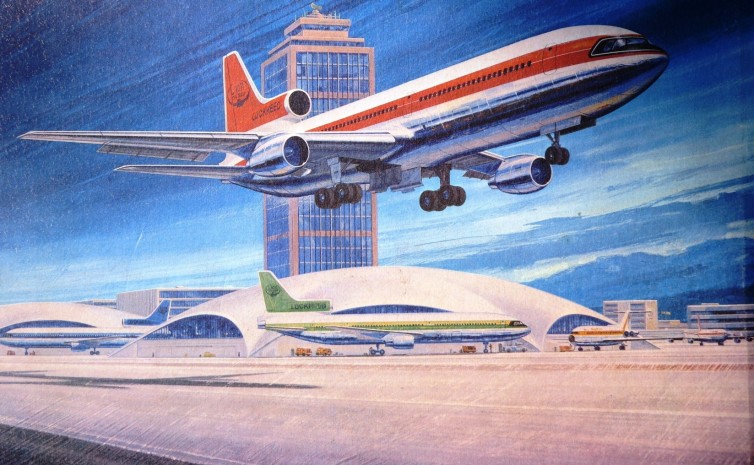
Artist Impression of Future Airport – Image: Lockheed-California Company
I have always been a fan of all things esoteric, the unique, and perhaps even the underdog. Engineering oddities fascinated me from a young age; if it was different or somewhat outlandish, I was hooked. For that reason, it’s probably no surprise to many people that the aircraft I adore more than all others (yes, even more than Concorde) is the Lockheed L-1011 TriStar.
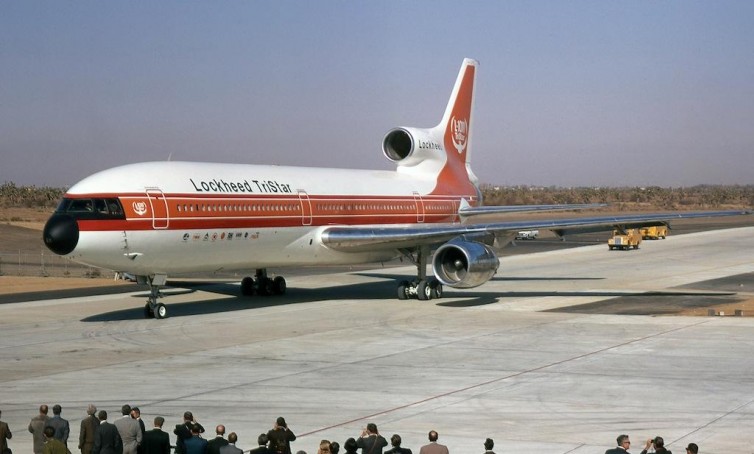
The L-1011 prototype after completing her first flight on November 16, 1970 – Photo: Jon Proctor
However, I can take things a step further, because for me, this is more than an aircraft; it represents the engineering prowess of hundreds of engineers ’“ one of whom I happened to know very well. A man who was lucky enough to spend a lifetime in aviation working for some of the most storied aeronautical firms in history, such as Avro Canada (later Hawker Siddeley), Convair, De Havilland Canada, and Lockheed. Prior to his death in 2013, this engineer described the L-1011 as his ’œmagnum opus’, his greatest achievement as an engineer and the work that he was most proud of.
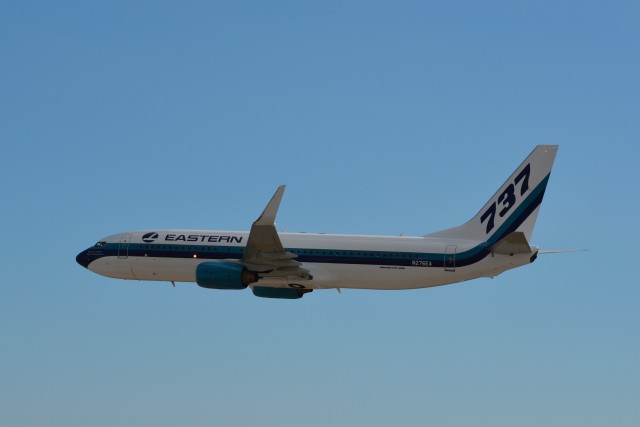
Eastern Air Lines’ first 737-800 flies over Miami – Photo: Airways News
This story was originally published by Chris Sloan and Luis Linares on AirwaysNews.com
Nearly 24 years after the original Eastern shut down on January 18, 1991, the new Eastern Air Lines welcomed home its first new aircraft on December 19. Ex-Kenya Airways Boeing 737-800 ’œThe Spirit of Captain Eddie Rickenbacker,’ N276EA, arrived from Shannon, Ireland (SNN) via Portsmouth, New Hampshire (PSN) into the airline’s base at Miami International Airport at 3:13 p.m. local time on Runway 8R to a water cannon salute.
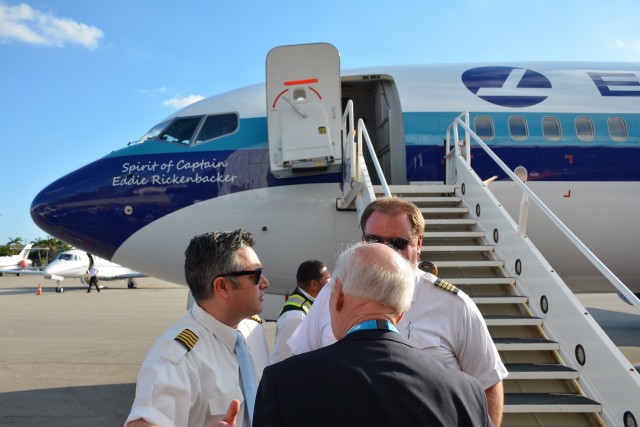
The flight crew outside of EAL’s first 737 in Miami – Photo: AirwaysNews
EXTRA: Flashback Friday; The History of Eastern Air Lines
The fanfare reached far beyond that of a traditional airline launch, particularly in Miami. Miami was the original Eastern’s headquarters, and the carrier was the city’s largest employer from the mid-1970s until its 1991 shutdown. It was evident that the event and ceremony were an emotional, tear-felt occasion for the new team, and especially for the retirees and former employees of the original Eastern. Their turnout was quite moving.
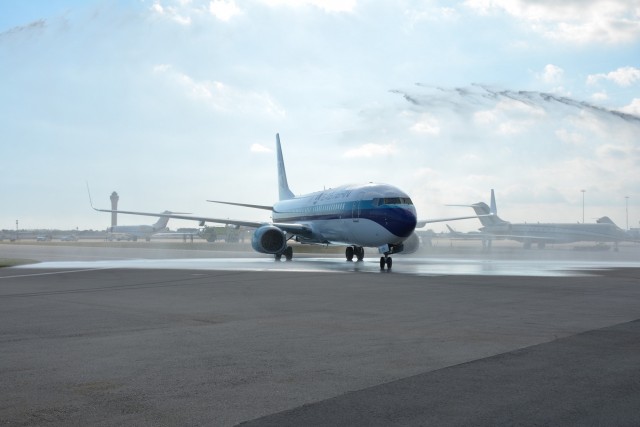
A water cannon salute at MIA greets Eastern’s 737 – Photo: AirwaysNews
The airline has 10 Boeing 737-800s on order, with purchase rights on 10 737 MAX 8s. Moreover, the company announced in July 2014 that it had placed an order for 20 Mitsubishi MRJ90s, with rights for an additional 20 of the regional jets. Eastern starts flying in March 2015 and will initially operate as a charter carrier, with scheduled operations due to begin in the next 12 to 18 months following FAA certification.
Continue reading The New Eastern Air Lines Takes Delivery of First 737 in Miami on AirwaysNews.com
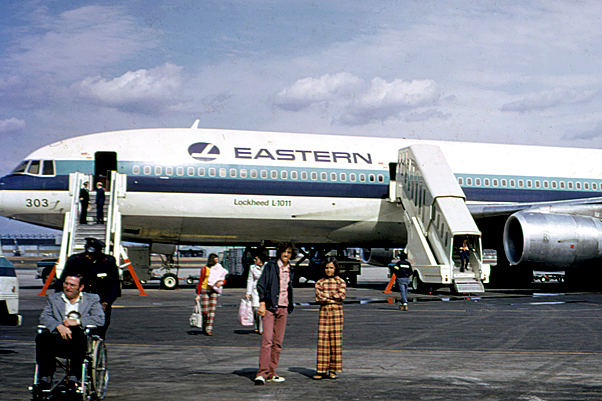
An Eastern Air Lines L1011 – Photo: Wiki Commons
This story was written by David J Williams on NYCAviation.com
Student pilots are taught very early on to recognize that when an airplane approaches its minimum flying speed, the airflow over the wing will begin to separate or break down, creating turbulence over the tail. The degradation of lift and the associated turbulence over the tail causes the airplane to buffet and alert the pilot to a deteriorating and dangerous situation. The recovery is rather basic ’“ lower the nose some, apply full power to the engine and let the airplane fly out of it. As it accelerates, the buffeting will end and the aircraft will safely regain both flight and controllability.
In the 1930’s, military and large civilian airplanes were being equipped with supercharged and turbocharged engines. These engines enabled to the planes to fly higher and faster than airplanes with normal engines. However, these ’œboosted’ engines required a pilot with a delicate hand on the throttles. Whereas a normally aspirated engine could run at full throttle continuously without much more than some added wear, the supercharged and turbocharged engines would run beyond the normal power limits creating excessive heat which, in minutes, would damage the engine. Only when the situation was critical could a competent pilot consider ’œfirewalling’ the throttles by pushing them to the stops and exceeding the manufacturers’ limits.
When the turbojet airliners appeared in the late 1950’s, engine heat became an even more critical issue. Firewalling these engines would result in immediate engine damage from the heat, while only providing a small gain from accelerating the engine past takeoff power. This is because the supersonic exhaust stream beyond the takeoff limit ’œchokes’ in the tailpipe and the additional thrust is lost, becoming marginal at best.
Continue reading The Disaster That Wasn’t: Saving Eastern Air Lines Flight 902 on NYCAviation.com
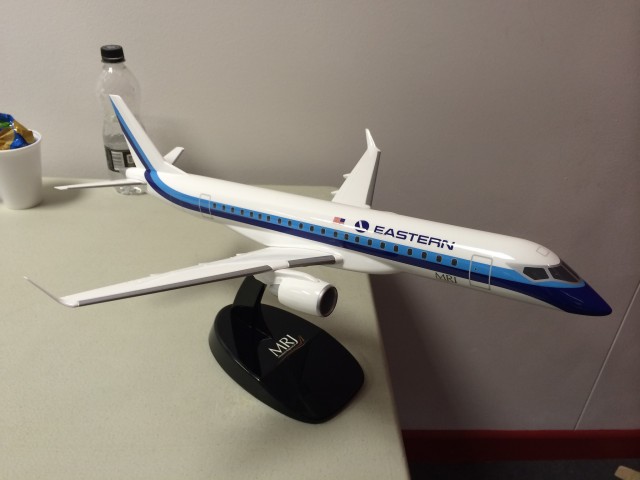
A model at Farnborough showing the Eastern livery on the MRJ90 – Photo: Jon Ostrower
Whenever there is news that a startup airline is going to launch with a classic name-sake, I get a little excited. When press releases started coming in saying that Eastern Air Lines was going to start up again, I was happy, but of course skeptical.
Even back in May when they signed an initial order with Boeing and placed deposits for 10 737-800NG and 10 737 MAX 8 aircraft, I was unsure about the viability of the airline.
Then, last week at the Farnborough Airshow, they announced the signing of a Memorandum of Understanding for 20 Mitsubishi MRJ90 aircraft, with purchase rights to an additional 20. Now, I am starting to pay a bit more attention.
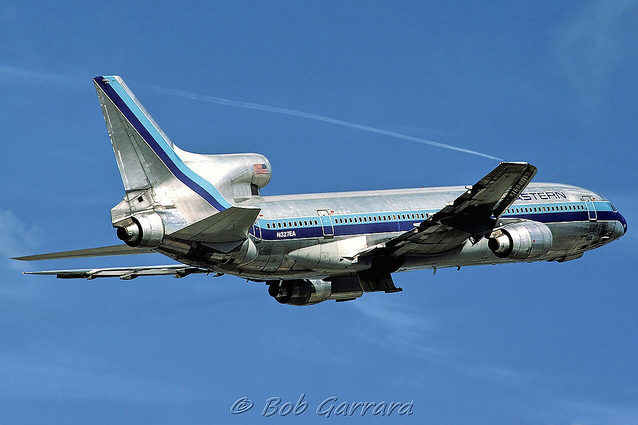
Eastern Air Lines Lockheed L1011. Photo by Bob Garrard.
This post was written by Vinay Bhaskara with BangaloreAviation.com for AirlineReporter.com:
Eastern Air Lines was a pioneering carrier in the history of American commercial aviation. Its many historic achievements include launching the concept of a shuttle service between New York, Boston, and DC, as well as launching the Airbus A300 in the US market. However, thanks to gross mis-management by airline industry super-villain Frank Lorenzo, Eastern Air Lines sadly shut down on January 19th, 1991, making 1990 its last full year of operations.
In honor of the anniversary of Eastern’s passing, I’d like to share some interesting statistics from Eastern’s last full year of operations in 1990.
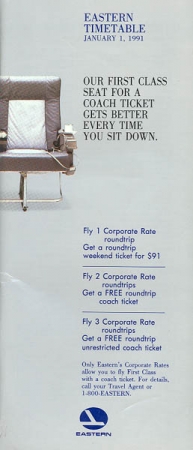
Part of a January 1991 Time table for Eastern Air Lines. The airline wouldn’t make it past the month. Image from Chris Sloan / Airchive.com.
Over the course of 1990, Eastern Airlines carried 22.09 million passengers on 279,793 scheduled flights, or an average of 60,536 passengers per day on 767 daily flights. On average, each flight carried around 79 passengers. Eastern offered a total of 38.25 million available seats. Thus Eastern’s system wide seat load factor was 57.8%. When compared to today’s bone-crunching reality of close to 90% load factors this may seem like a better option, but remember Eastern was losing tons of money at those loads. System wide, Eastern served 94 destinations, including 27 international ones (as well as San Juan and Ponce in Puerto Rico).
During 1990, Eastern operated 5 aircraft types including the Boeing 757-200, the McDonnell-Douglas DC 9-30, the McDonnell-Douglas DC 9-50, the Airbus A300 B4, the Boeing 727-200, the Douglas DC 10-30, and the Lockheed L1011-1 Tristar. The DC 10-30s were solely operated on the Miami-Rio de Janeiro flights, while the Lockheed L1011s were operated throughout the system on high volume flights between the Northeast, Miami, Atlanta, California, and San Juan, as well as between Miami and Bogota, Lima, and Guayaquil in South America. The 757-200s operated around 89 flights per day, while the DC 9 fleet operated more than half of the total number of flights with around 390 per day. The A300s operated around 38 flights per day, while the 727s operated close to 230 flights per day.
note: all figures approximate and are from the Dept of Transportation.
By far the largest operational base was Atlanta, which had 104,927 departures scheduled, around 288 daily departures. While this may seem small today given Delta’s 1000-plus flights per day hub in Atlanta, at the time, it was one of the largest airline hubs in the whole world.
For the year, Eastern carried 16.50 million passengers through its Atlanta hub, representing 74.7% of their total passenger base. Capacity-wise, Atlanta represented around 72.3% of Eastern’s total available seats, and Atlanta’s seat load factor was slightly higher than that of the overall network at 59.7%. From Atlanta, Eastern served 68 destinations, 4 of them international (plus San Juan, Puerto Rico). Perhaps the weirdest destination that they served was Gainesville, Florida with Douglas DC 9-30s and DC 9-50s, which today lacks mainline service. Below is a route map of Eastern Airlines’ service from the Atlanta hub:
Eastern also had a large Latin American gateway in Miami. After it shut down (along with Pan Am ’“ the other big Miami operator), both American Airlines and United (to a limited degree) moved in to fill the void in Miami and serve the strong ethnic demand between Miami and Latin America/the Caribbean.
By 1990, Eastern Air Lines once robust hub in Miami had shrunk to serve as primarily an origin and destination (O&D) base for service to Latin America. They operated just 40 daily departures and served only 11 domestic destinations: Atlanta, Boston, Chicago, Los Angeles, New York La Guardia, Newark, Orlando, Philadelphia, Palm Beach, San Francisco, and Tampa (as well as San Juan, Puerto Rico and Toronto, Canada). But it was still a powerhouse gateway to Latin America, serving 23 destinations. The route map for the Miami Latin American gateway is shown below:
Over the course of its long history, Eastern also had hubs in Charlotte, New York JFK, Kansas City, New York La Guardia, and San Juan, as well as large focus operations in Chicago, Orlando, and Tampa. But by 1990, these had all been reduced to mere ’œspokes’ in Eastern’s network.
An airline that had been the world’s largest in the mid 90s had shrunk to a shell of its former glory. But despite the financial troubles driven by a decade of mismanagement, Eastern’s network was actually very well designed. Much of its network out of Atlanta was later replicated by low cost carrier AirTran Airways in the shadow of the Delta behemoth. And its vacated routes out of Miami formed the basis for American’s new Latin American gateway that today is perhaps its strongest hub.









